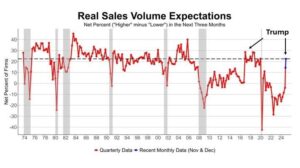As banks continue to reinvent themselves using AI, data, cloud and other technologies, the industry finds itself in a paradox.
A quarter century of digital has completely transformed banking, making it faster, cheaper, and more efficient than ever, with customers moving money in seconds, 24×7, through the push of a button.
But, as a result, it’s made banking impersonal and created a sea of sameness as banks become less differentiated and lose the human connection fostered at the branch level.
AI holds the solution to this paradox. It will enable banks to understand customers on a deeper level, power meaningful conversations, and tailor offerings to the unique needs of their customers. Banks can reclaim their role as trusted financial partners, fostering stronger customer relationships in ways that benefit both parties, much like branch managers did forty years ago. Addressing the paradox requires a shift in mindset, looking to the past to build the bank of the future.
Here are the top ten banking trends for 2025 and beyond:
1. Technology enables banking for all
As a result of digital, the World Bank estimates that between 2011 and 2021 the percentage of adults with a bank account at a financial institution or through a mobile money provider grew from 51% to 76% —an increase of more than 1.6 billion customers. This staggering increase would not have been possible without the advent of digital technologies, cloud services and the emergence of open-source technologies, all of which have driven a radical reduction in the cost to serve. For example, Nubank in Brazil services more than 100 million customers at an average operating cost per customer less than $2 a month. The question now for banks is how can they adopt a page from the digital attackers and radically transform their cost to serve.
2. Regulators quest to eliminate risk is creating new risk
Coming out of the great financial crisis, most bankers believed that some regulation was needed to restore trust in the banking system in order to maintain and grow their share of the market. Instead, the opposite happened, with risk being pushed outside of the banking ecosystem and non-banks taking market share. The most recent example of this is private credit, which is growing almost 20% a year, and Citi’s recent private credit partnership with Apollo Global Management is evidence that even banks themselves are reconsidering their strategies. The question banks should be asking now is what risks do they want to hold and where are the true strategic moats in their business (hint: scale and complexity are hard to overcome).
3. Scale matters more than ever
When Morgan Stanley announced its third-quarter results in October, CEO Ted Pick noted that the bank’s biggest rivals had also recorded impressive gains and said: “There is an element of the leaders pulling away from the pack.” Globally, the largest revenue pool is commercial banking, yet the most profitable segments are consumer banking and wealth management. In terms of scale, those banks that can build national and perhaps even international global consumer brands could capture some of the most profitable pools in the industry. At the high end of commercial banking, those able to operate and service their clients globally will be well positioned. Does this mean that community and small banks will struggle? No, specialized relationships will still matter and there will always be a need for banks that can provide local services. But when it comes to brand and global markets, scale will matter.
4. Customer experiences go back to the future
The question every bank should ask is why isn’t working with your bank as easy as texting your best friend? Forty years ago, if you had a problem, you walked into a branch and the branch manager was there to help you. Today, customers get stuck with byzantine chatbots that deliver frustrating experiences. While digital has helped us bank 24/7, it’s been on the banks’ terms, through their journeys and their desired way of sequencing the customer experience. The future will look more like the past and should feel like a continuity of conversation connected across channels, in many ways the same way a branch manager has done. Gen AI and agentic agents will combine to allow banks to generate new experiences that feel more like texting with your best friend than having your paperwork outsourced to you.
5. Product strategy: From siloed to inseparably connected
For decades, banks have organized and presented themselves to their customers in a product-centric approach. In a future where open banking allows personal agents to scan thousands of products and customize and create experiences for individuals, banks could find themselves increasingly commoditized. Banks need to move from a siloed product-centric mindset to a customer-centric mindset, creating offerings across product silos that ensure their customers bank with no one else and recognize them for the total value that they bring. This will require a radical shift in mindset around how P&Ls are organized inside of banks.
6. A different way of working
There’s been a lot of discussion about the impact of generative AI and jobs. Our analysis shows that 67% of working hours in banking could be changed by gen AI. But the question everyone’s asking is will roles be eliminated and which ones? Our view is that, again, the past holds the key to the future. In 1979 with the launch of VisiCalc, now known as Excel, the prediction was that many jobs in finance would be eliminated but it’s safe to say there are more jobs today. The same holds true for generative AI. The nature of jobs and what we do will be changed by the technology, but new roles will emerge and efforts that have been long abandoned due to lack of staffing will come back and be brought front and center. Talent will adopt to these new ways of working as they always have. Culture may be the ultimate differentiator for the winners and losers here. Banks with a culture of curiosity tempered with execution are likely to be leaders.
7. A shift from ‘waste out’ to ‘value in’
As the nature of work changes, and as time is freed up, the greatest question for banks is will they take that time to the bottom line or invest it in top line growth. We believe the best banks in the world will adopt a mindset of taking waste out of processes but putting value in to drive the top line. Many banks are using gen AI to summarize calls, saving call center agents 2 to 4 minutes per call. Some banks are taking this to the bottom line while others are using it to engage more with customers and cross-sell additional products. Gen AI can also streamline credit processing. Some banks are taking it to the bottom line, while others are using it as an opportunity to evaluate more loans. This shift in mindset, what do I do with the benefits of gen AI, could be the greatest determinator of bank valuations over time.
8. The future is open source
In the 1970s, most banks had one operating system (OS/360). Over the ensuing five decades, there has been a massive proliferation of hardware, operating systems and software. So much so that many banks’ core systems today are similar to Rome and other ancient cities that consist of innumerable layers of construction, built one upon the other over a very long time. Increasingly, though, open source, specifically the Linux operating system, is becoming the new common foundation for banking. It’s the core operating system that powers nearly every cloud. Its market share has been steadily increasing and most new bank platforms operate on a Linux core. Over time, this will bring us back to the future of a more common operating system and help simplify bank architectures. And banks are taking this to another level with partnerships such as the Fintech Open Source Foundation (FINOS), where they are sharing their internal code to help create the future standards for banking.
9. Traditional coding fades into the past
We’ve talked previously about how gen AI is being used as a Rosetta Stone to decode decades of legacy bank code into its original specifications. But the real power of the technology is not in decoding, it is in encoding—specifically the ability to radically change the software lifecycle development process. We are already seeing banks testing the next generation of code directly from specifications. It’s no longer about creating the code, it’s the product definition that will define it. Try it yourself. Ask your favorite LLM to write a program to calculate the average daily balance of an account based on the daily closing balances. You’ll quickly see that programming languages don’t matter. Gen AI can write it in any language that you like.
10. Platform providers face the innovator’s dilemma
For most of the early part of the computer age, banks often developed their own software to handle structured financial data. Over time, they bought software packages to reduce development times and heavily customized them to their own environments, with the rise of the internet and cloud then leading to more composable SaaS architectures. The challenge now for banking ecosystem software providers is how—in the age of gen AI—they bring this all together into a more modern, composable architecture for the future that can tap into historical bank data and the enormous unstructured data trapped in banks’ systems. This is hard to predict, but the future may again look like the past, with banks able to buy more composable architectures that can be easily woven into customized banking solutions that power many of the trends above.
The transition to the bank of 2030
As we move from digital to the AI age, we see a future of banking that looks more like the past than the present, but one in which technology is even more integral than it is today. Given the change we see coming, the greatest differentiator of success may not be talent or balance sheet, but very well culture. The banks that can balance curiosity and execution will win with their employees, customers and partners.
Read the full article here











